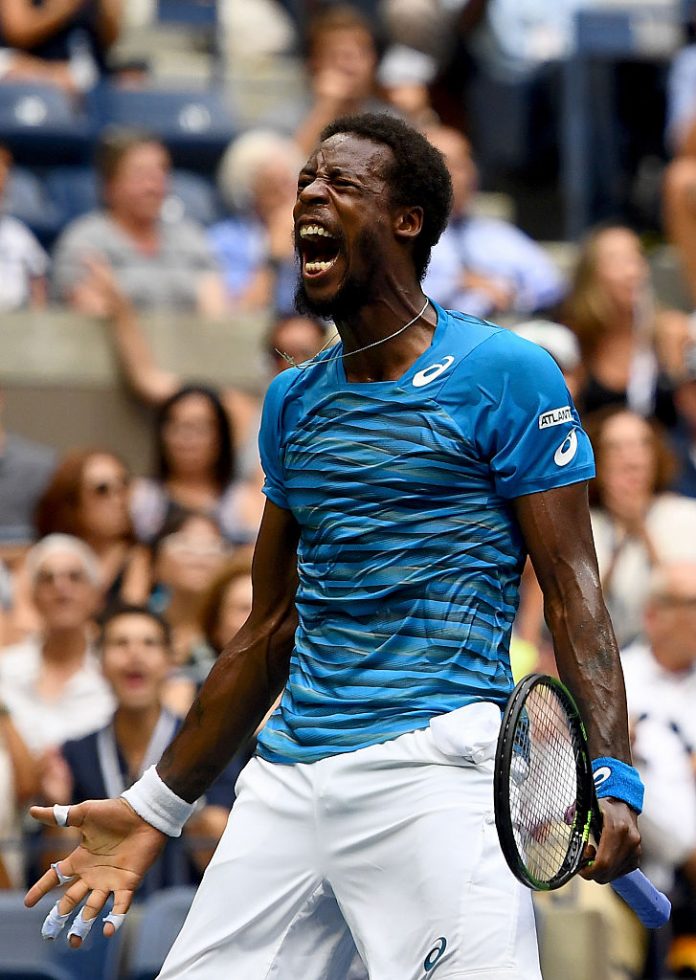By Michael Mewshaw
There is something sad and exasperating about the reaction to Gael Monfils’ loss to Novak Djokovic in the US Open semi-finals. Spectators booed. Commentators tut-tutted. John McEnroe, of all people, called Monfils unprofessional. And what had the French dude done? Mooned the crowd, a la Nastase? Called the ump an abortion, a la Connors? Thrown sawdust in a fan’s face, a la McEnroe? No, nothing like that. The Frenchman had simply followed a basic rule of tennis – don’t stay with a losing game.
Down 0-4 after blasting cross-court shots that the Djoker gobbled up for winners, Monfils changed gears, switched to Plan B, and took everything off the ball except the last bit of yellow fuzz. In short order, he frustrated the Serb, got into his head, and started stealing points. Indeed he stole the third set, and not only made the match more competitive, but more intriguing for true tennis aficionados who were reminded that the game doesn’t give automatic points for power, style, personality or bathing suit. It’s not a beauty contest. It’s a test to determine who can win one more point than the opposing player. Slice, topspin, dropshot, lob, squash shot, moonball, dink – the object isn’t to become a brain-dead clone of every baseline blaster. The goal is to win.
These days, however, there seems to be a silly assumption that there’s just one way to play and win and that’s to bash the ball as hard as possible. The guy or gal with the greatest strength and stamina and quickest quick-twitch muscles is by Divine Right expected to dominate at the public courts, at tennis academies, then at the junior and pro levels. Doing anything different apparently strikes people who should know better as unfair, slimy and contemptible.
What curious reasoning! If your opponent has a weak backhand, it’s okay to exploit it. But what if your opponent’s greatest weakness lies between his or her ears? What if an unorthodox game makes the guy or gal come unglued so that he claws off his shirt like Djokovic did against Monfils? Why shouldn’t you dish up another dink shot until the guy or gal either adapts or capitulates?
Okay, Novak did adapt, and Monfils didn’t win. But plenty of players have become champions and plenty of famous matches have been won by competitors who played with guile and cunning while their opponents marched in lockstep to defeat. It’s precisely the same principle that led Muhammad Ali to lean back against the ropes and let George Foreman punch himself out. Rope-a-dope has its tennis equivalent in the sort of misdirection, off-speed shots that made Fabrice Santoro, another artistic Frenchman, the bane of so many paint-by-the-numbers players. Rope-a-dope was also Miloslav Mecir’s MO. The Big Cat from Slovakia moved so smoothly and served so slowly he mesmerized his way into the top ten during the 80s.
Or consider the case of Michael Chang, age 17, cramping badly at Roland Garros against the Czech automaton Ivan Lendl. Think how much poorer tennis history would have been had Michael not tossed in an underhand serve that sent Ivan mad-dog barking to defeat.
The pinnacle of the unexpected, the absolute contradiction of convention, occurred at the 1975 Wimbledon final when Arthur Ashe confronted Jimmy Connors. In a pre-match conference with friends, Ashe concluded that he couldn’t beat Jimbo by overpowering him. He had to out-think him. He had to – yes, yes – rope-a-dope the lefty, aborting his two-handed backhand, and forcing him to hit ball after ball that fell to Connors’ forehand like the fluff from a dandelion. In one of the greatest and most entertaining upsets in tennis history, Ashe dismantled the Djokovic of his day. But nobody called him unprofessional. No one described the match as bizarre, even though it was a beatdown with a powder puff instead of a sledgehammer. So don’t let the criticism get to you, Gael. But next time, just win, baby!
Michael Mewshaw’s most recent book, Ad In Ad Out, a collection of his articles about tennis, 1983-2016, is now available as an e-book on Amazon.com.



















